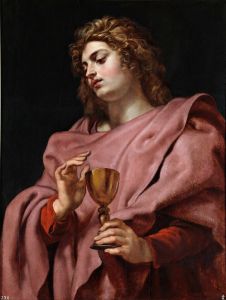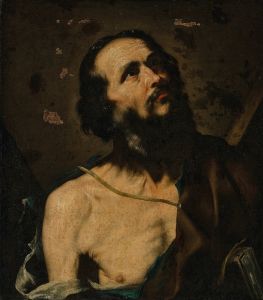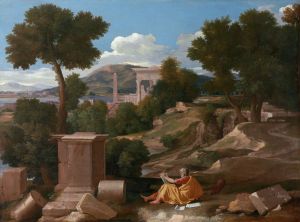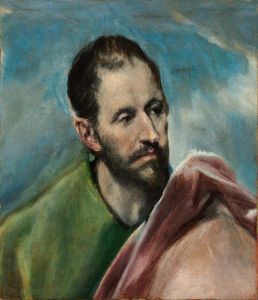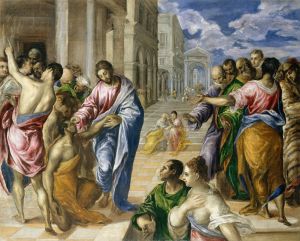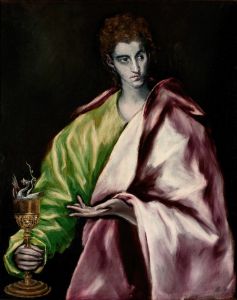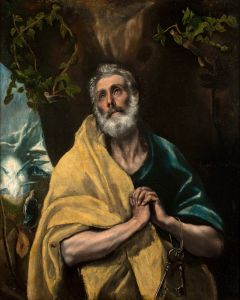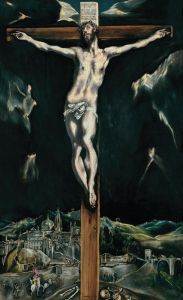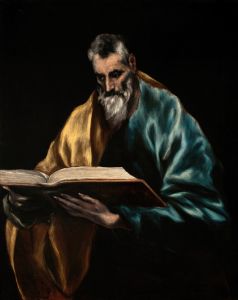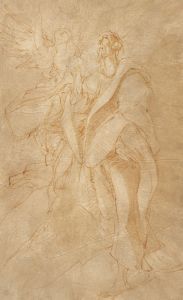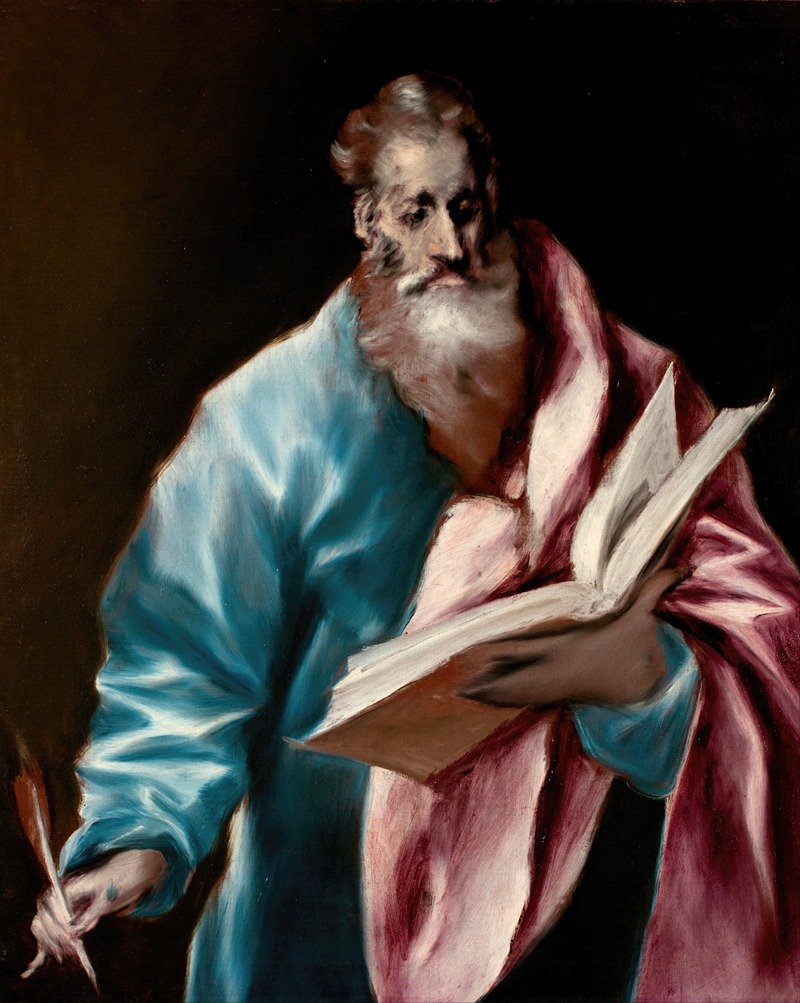
Apostle Saint Matthew
A hand-painted replica of El Greco (Domenikos Theotokopoulos)’s masterpiece Apostle Saint Matthew, meticulously crafted by professional artists to capture the true essence of the original. Each piece is created with museum-quality canvas and rare mineral pigments, carefully painted by experienced artists with delicate brushstrokes and rich, layered colors to perfectly recreate the texture of the original artwork. Unlike machine-printed reproductions, this hand-painted version brings the painting to life, infused with the artist’s emotions and skill in every stroke. Whether for personal collection or home decoration, it instantly elevates the artistic atmosphere of any space.
Apostle Saint Matthew is a painting by the renowned artist El Greco, whose real name was Domenikos Theotokopoulos. El Greco was a prominent painter, sculptor, and architect of the Spanish Renaissance, known for his distinctive style that combined elements of Byzantine traditions with Western painting techniques. Born in Crete in 1541, El Greco later moved to Spain, where he produced some of his most famous works.
The painting Apostle Saint Matthew is part of a series of works depicting the apostles, which El Greco created during his time in Spain. This series is notable for its expressive use of color, dramatic lighting, and elongated figures, which are characteristic of El Greco's mature style. These elements reflect his unique approach to religious subjects, blending spiritual intensity with a highly individualistic artistic vision.
In Apostle Saint Matthew, El Greco portrays the apostle with a sense of reverence and introspection. The figure of Saint Matthew is depicted with elongated proportions, a hallmark of El Greco's work, which lends the painting a sense of otherworldliness. The apostle is often shown holding a book or scroll, symbolizing his role as one of the authors of the Gospels. This iconography is consistent with traditional representations of Saint Matthew in Christian art.
El Greco's use of color in Apostle Saint Matthew is particularly striking. The palette is rich and varied, with deep blues, vibrant reds, and luminous whites that create a sense of depth and movement. The dramatic contrasts between light and shadow enhance the emotional impact of the painting, drawing the viewer's attention to the face and hands of the apostle. This technique, known as chiaroscuro, was used by El Greco to convey the spiritual intensity of his subjects.
The painting is also notable for its psychological depth. El Greco's portrayal of Saint Matthew captures a moment of contemplation, inviting the viewer to reflect on the apostle's inner life and spiritual journey. This introspective quality is a key feature of El Greco's religious works, which often focus on the emotional and spiritual experiences of their subjects.
Apostle Saint Matthew, like many of El Greco's works, reflects the artist's deep engagement with the religious and cultural context of his time. The painting was created during a period of significant religious upheaval in Europe, marked by the Counter-Reformation and the Catholic Church's efforts to reaffirm its authority. El Greco's art, with its emphasis on spiritual expression and individual experience, resonated with the religious fervor of the era.
Today, Apostle Saint Matthew is recognized as an important example of El Greco's contribution to the art of the Spanish Renaissance. The painting is held in high regard for its innovative style and profound spiritual expression, which continue to captivate audiences and inspire artists. El Greco's work, including Apostle Saint Matthew, remains a testament to his unique vision and enduring influence on the history of art.





